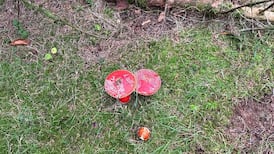Dublin’s principal sewage treatment plant at Poolbeg stank to high heaven after it was upgraded several years ago to reduce pollution in the bay. Indeed, the unmistakeable stench travelled on an east wind as far as Donnybrook.
At first, the authorities denied there was a real problem – and then, having admitted it, had to spend €5 million sorting it out.
So it’s no wonder that residents of the three areas selected as possible locations for Fingal’s treatment plant were concerned.
Its origin goes back to a boom-time study for the four Dublin local authorities, carried out by the Dublin Drainage Consultancy along with Dublin City Council. Costing €10 million, it calculated that €2.4 billion needed to be spent on drainage and sewerage in the area.
Inevitably, the June 2005 report recommended expanding the main sewage works at Poolbeg. But residents of Fingal were really surprised that it also identified the need for an entirely new treatment plant somewhere close to the north Dublin coastline.
At the time, with Metro North very much on the agenda and plans for enormous population growth in and around Swords, Fingal County Council was going to have to face up to the fact that it could no longer "export" growing volumes of sewage to Poolbeg.
All bases were covered by the engineering-driven Greater Dublin Strategic Drainage Study, including the provision of a series of holding tanks for combined foul (sewage) and storm drains to prevent overflows to rivers and streams during heavy rains.
Of the €2.4 billion in investment recommended by the study, more than half (€1.3 billion) was to be spent in the six years to 2011. That didn’t happen, of course. Even site selection for a sewage treatment plant – never mind construction – can take a very long time.
Portrane proposal
An earlier proposal to build the new plant on Portrane peninsula was roundly defeated by Fingal councillors, after they heard it would have been second only in size to Poolbeg in the Dublin region and that it would be "importing" sewage from elsewhere.
What emerged yesterday was a "preferred option" that project engineer Peter O'Reilly described as the "most environmentally beneficial and technically advantageous solution" – a sewage works at Clonshaugh and a 6km sea outfall off Baldoyle.
Tunnelling of this southern outfall would be technically easier and it would also be in deeper water to “facilitate greater initial dilution of treated wastewater discharges in the sea”. And in these hard times, it would also be cheaper - by an estimated €80 million.
Residents of Clonshaugh will undoubtedly feel put upon, just as those living in Annsbrook and Newtowncorduff will feel relieved.
There will, of course, be a further round of public consultation prior to the planning application being submitted to An Bord Pleanála in "early 2014".










